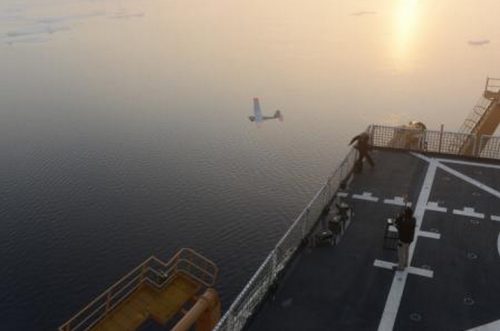
JUNEAU, Alaska –The Coast Guard reminds commercial fishing vessel operators to be aware of the dangers of icing and vessel stability as the winter fishing season gets underway across Alaska.
A vessel’s center of gravity can rapidly rise when freezing spray accumulates high above the main deck. Icing conditions increase the risk of capsizing and sinking.
Operators should use all available resources to determine if icing and freezing spray is forecast in their location for the next 48 to 72-hour time window. If icing conditions are forecast or present, operators should seek shelter, reduce speed, change course and manually remove ice. Operators should also consider reducing the amount of bait, gear and pots onboard the vessel prior to departure.
Vessel owners, operators and crews are advised to give special consideration to vessel stability concerns after multiple fatalities and complete loss of the fishing vessel Destination occurred in the Bering Sea Feb. 11, 2017.
“The amount of ice can change in an instant depending on a number of variables such as loaded condition and freezing spray,” said Anthony Wilwert, Fishing Vessel Safety Coordinator for the 17th Coast Guard District. “Some ways to mitigate ice build up on a vessel include slowing speed, changing heading and tarping deck loads to shed water. Boaters should also remain diligent about monitoring weather forecasts and staying out of icing conditions in the first place.”
Operators and crew should seek out opportunities to further their knowledge of stability with courses, training, workshops and visits from naval architects. They should also take advantage of other initiatives, both mandatory and voluntary, to discuss and complete a vessel’s current Stability Instructions to the actual load condition prior to departing port. An independent review of a vessel’s loaded condition, equipment and operations can often provide important insights.
Operators should confirm the accuracy of their SI whenever a vessel undergoes any of the following actions:
Major conversions or substantial alterations (See 46 CFR 28.50 and 28.501);
Changes to a vessel’s rigging, deck or fishing equipment, including pots;
Changes in principal dimensions, cargo hold or tank capacities;
Circumstances of weight creep, which is the accumulation of extra gear, equipment and parts carried aboard the vessel, and any other weight change variations that may occur.
Additional information and questions on vessel stability may be sent to HQS-PF-fldr-CG-INV@uscg.mil.
Source: USCG
[xyz-ihs snippet=”Adsense-responsive”]







